When I decided to get into helium mining, obviously my first question was, when would I see a Return on Investment (ROI)? Considering all the components I needed (i.e. miner, antenna, cabling, other mounting hardware) was roughly between $1000 – $1500 CAD I would be paying out up-front. Knowing this, if I could make at least $100 a month for one year I would be fine with that, now just need to figure out how much helium miners are making currently in my area.
Luckily we are able to answer the questions below in order to somewhat loosely estimate how successful you would be, and suggest equipment that works well in your neighbourhood.
How saturated is my neighbourhood with Helium Miners?
There needs to be a good balance of miners in a neighbourhood, so in some cases more is good, in others more is not good. To get an understanding of the current Helium network and where the services is available, Helium provides an online Helium Network Explorer map to help you as shown in the example below.
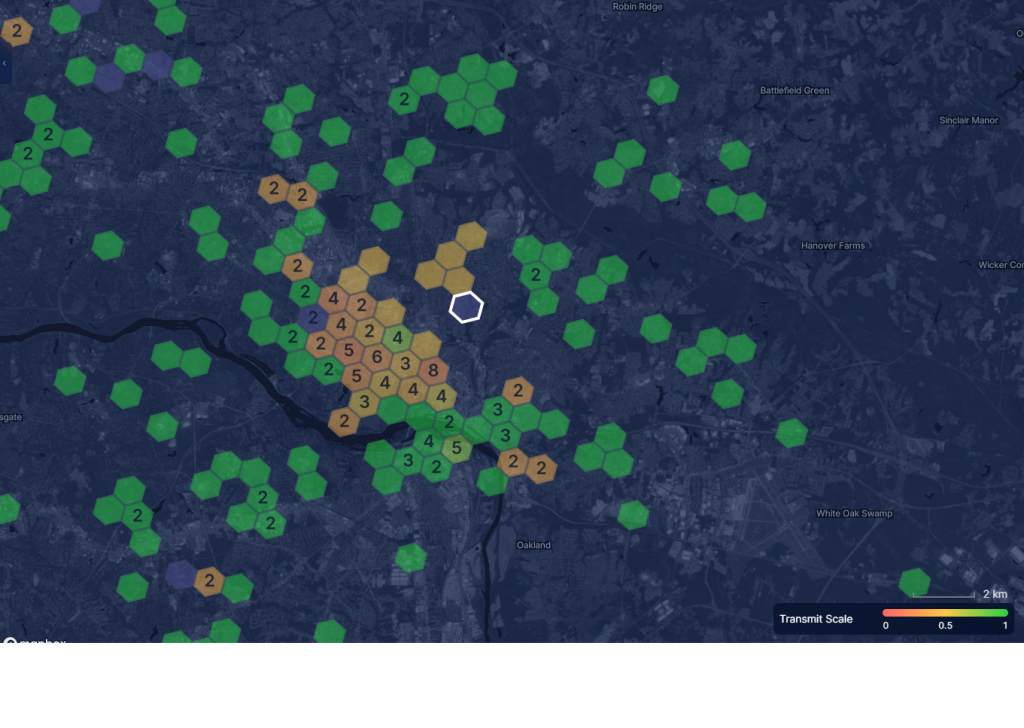
This is the Helium map of a random city, but shows nicely the saturation of mining devices. As per the map, if you are placing your miner in a green area that would be more beneficial, as the orange and red area’s with 5 and 6 other miners in the area would not be as profitable (more on this below). These hexagons do take up a large area and the ideal distance between miners is roughly 300 meters.
If there are multiple miners in a hexagon, it may be possible that they are spread enough apart to prevent clustering and congestion. To see this we will need to use another website that will show the location of the miner installations as shown below using the website HotSpotty. Shown below is the same location as shown using the Helium Explorer map (above), except with HotSpotty it shows the actual street location.
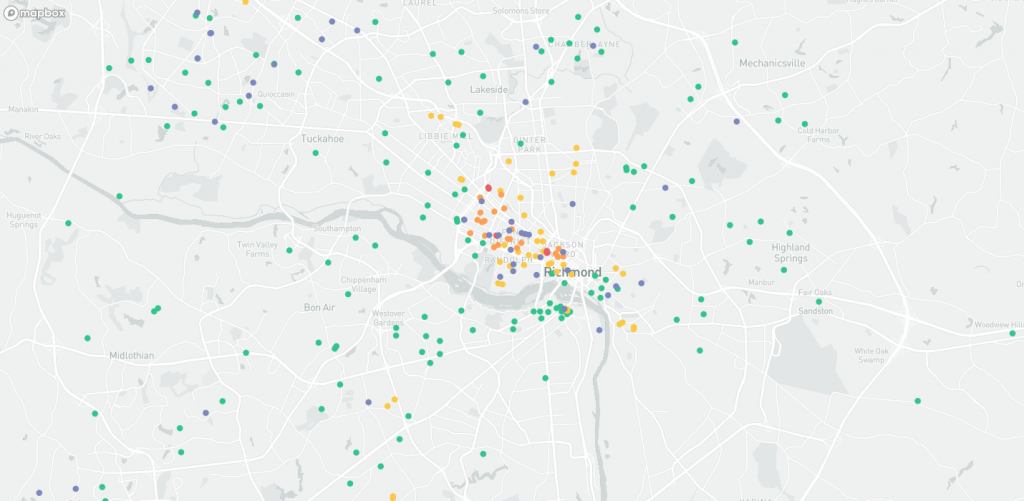
Using these 2 websites you should be able to get a good feel for if your area could support another miner, and how close your neighbouring miners are. In my case I found there was already 1 other miner in my hex, but we were literally on complete opposites of the hexagon, and spaced away from other miners in other hexes fairly well. Based on this I believe I have a half decent chance to make at least some HNT.
What are other Helium miners making in my neighbourhood?
Now that you have a feel for where your neighbouring miners are, you can actually see how these are performing and how profitable they are. The Helium Explorer Map provide this information and is quite handy for estimating your potential profits. By clicking on a hexagon it will show you a list of miners in that area, and by looking at this it appears that “Warm Metal Boar” has made 8.11 $HNT in the past 30 days. At roughly $40/HNT (at the time of writing this), that $300 -$325 – not bad, I’d certainly be happy with this.
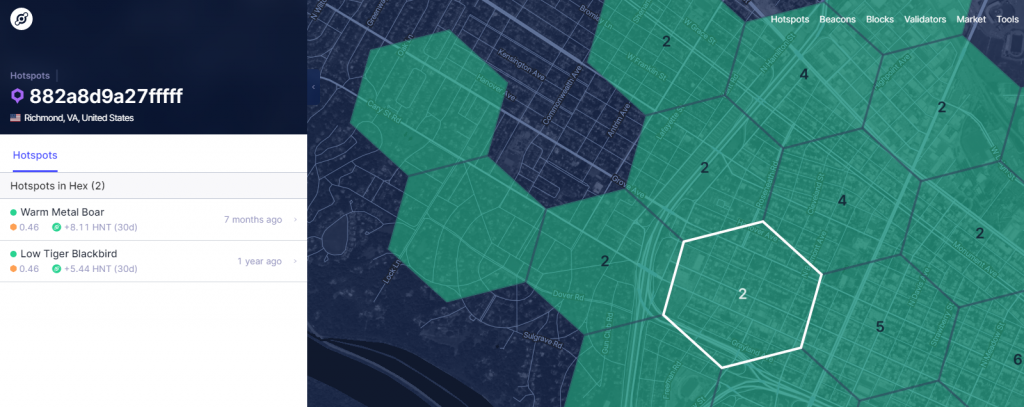
Looking at “Warm Metal Boar” a little closer we can drill down into their performance, reach, and spec’s.
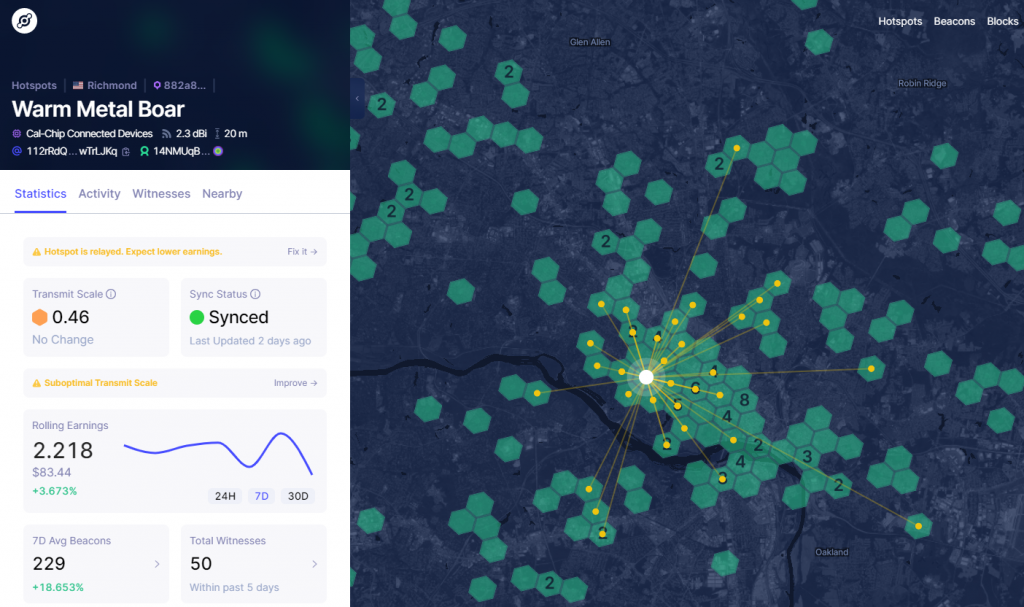
HotSpotty provides this information as well along with some other data points.
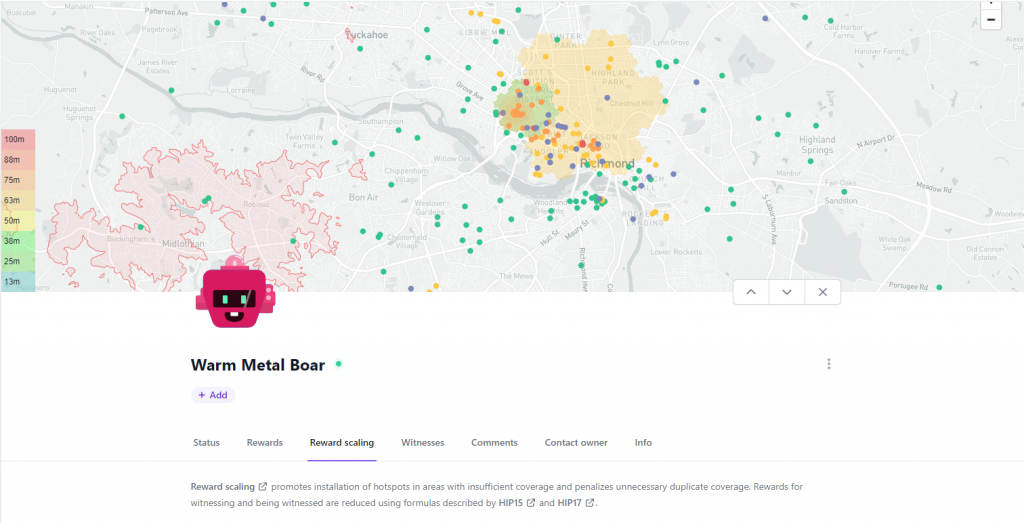
When I was trying to estimate my profit based on my neighbours I went through all the miners in my hexagon, as well as my neighbouring hexagons too see how much they have been making. In my case there is roughly 14 Helium miners in my and surrounding hex’s. Earnings for these miners range between 2 – 8 $HNT/month. In my case, if I was about to make ~5 HNT/month that would mean my ROI would be roughly within 6 – 8 months. This was also confirmed using a profit estimator I found online thanks to the Helium Deploy Team, and can be found here.

Please note: When using online profit estimating tools always assume the numbers presented to you are best case scenario. When using these types of tools I always target for roughly 60% of the data provided by these tools.
What Helium mining equipment are my neighbouring miners using?
In order to push to make more towards the higher end of that 2-8 HNT/month mentioned above we need to have appropriate equipment for your area. The best way that I found to do this was to use the Helium Explorer map again and look at the miners in your area.
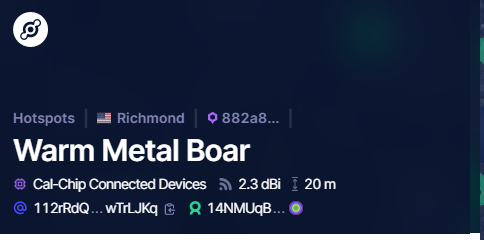
As shown above we are using the “Warm Metal Boar” hotspot again, we see some interesting data that provides us with some insight on this setup. This tells us that the antenna is 20 meters in the sky, they are using a 2.3 dBi antenna, and is using a Cal-Chip miner.
In my case, again I looked at all the hotspots in my area, comparing the setups of the higher earning hotspots. What I found was bobcat miners and 5.8 dBi antennas were performing the best and providing the most profit. I even took this a step further, and located my neighbour hotspots on Hotspotty, and drove around those area’s to try to find them to see if they were using an external antenna as these should be visible from the road and not invading and privacy. Based on this I can assume that a Bobcat Miner with a 5.8 dBi antenna, externally mounted should be close to an ideal setup that provides the best return.
With the above steps and information, by now you should have a pretty good indication for the start-up costs, and estimated returns and if Helium mining is for you. For myself I’m estimating the upfront costs are around $1400 CAD, but I am estimating to make $200 – $250/month. With these numbers I am looking to start turning a profit after 6-7 months. For me, this is within my comfort zone, as I am in this for the long term and am not expecting to go from rags to riches within a short period of time. In addition, I am technically incline to mount antenna’s and equipment, and also configuring appliances and network connectivity in order to maintain performance of your miner.
If you are not prepared to consistently monitor, maintain and otherwise troubleshoot your miners performance on a daily basis this will significantly impact your profitability. Also keep in mind, you still need to plan out where you will place your miner and antenna, and how you are going to connect everything together which may also require additional hardware, (i.e. mounting brackets, etc…) that will contribute to your helium maintenance costs, which we will get into more in the next post.
Check out the other posts in my “So I ordered a Helium Miner” Blog series:
- So I ordered a Helium Miner….. (Part #1)
- So I ordered a Helium Miner….. (Part #3) – Estimated Setup, Installation and Network Connectivity
- So I ordered a Helium Miner….. (Part #4) – UPDATED Estimated Setup, Installation and Network Connectivity
- My Bobcat 300 – Helium Miner Finally Arrived !!!
- Updated Helium Miner setup and Connectivity – Part #1




